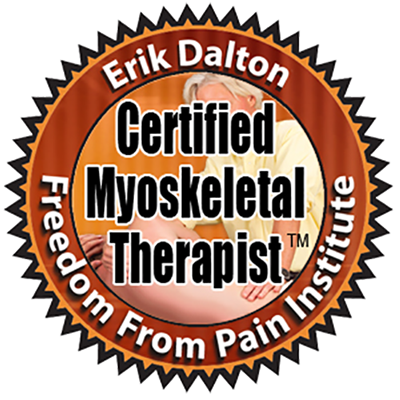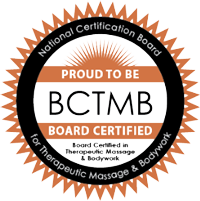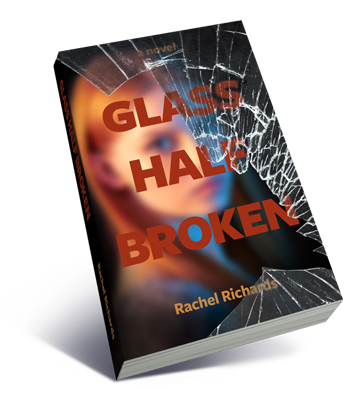News: September 2014
Unraveling the Mystery of Pain - Part 2
 Last month we learned that no tissue damage is necessary to create pain, that there is a direct link between physical and emotional pain, and that the most powerful indicator of a successful therapeutic outcome is the relationship between the patient and the practitioner. In this article, we'll delve deeper into the meaning of pain.
Last month we learned that no tissue damage is necessary to create pain, that there is a direct link between physical and emotional pain, and that the most powerful indicator of a successful therapeutic outcome is the relationship between the patient and the practitioner. In this article, we'll delve deeper into the meaning of pain.
Pain is far more than a stimulus. The way we experience pain has everything to do with how that pain is perceived. Our brains insist on assigning meaning to the pain we feel, and our interpretations of pain have the potential to go off the deep end. For example, take someone who got a little too ambitious at the gym and ended up feeling very sore the next day. That person knows why she's in pain, and can be confident that she'll recover in a day or two. Compare her to someone suffering from cancer. When he wakes up aching all over his body, he is distressed as his brain scrambles to find a reason for this pain. Has his cancer progressed? Has it metastasized? This interpretation can make the cancer patient's pain feel a lot worse than that of the person experiencing workout muscle soreness.
A presenter at the world massage conference talked about a man he knew - a man with cancer that took a medication meant to attack cancer cells. He was told that this drug might cause him considerable pain, but that the pain would be his only indicator that the drug was working successfully. This patient did in fact experience terrible pain, but was thrilled because he knew he was getting better! This illustrates how pain is not just an experience, but what that experience means.
In one of Pavlov's experiments on dogs, the dogs were shocked on their paws and then immediately fed. For these dogs, pain came to mean suppertime - a good thing. Pavlov then experimented with shocking the dogs in areas other than their paws. This confused the animals. Were they going to get fed? When the dogs were uncertain as to the meaning of their pain, they either got angry and aggressive or felt helpless and gave up caring. Others bounced back and forth between the two emotional states.
A person in pain gains a lot of perception from others who have the same condition. Someone who recently began experiencing migraines, for example, may come to expect the worst if they happen to know someone else who has been suffering from frequent, terrible migraines for years. In reality, people with pain conditions can have any number of experiences and outcomes. Once a pain-sufferer has a better understanding of the many different ways in which people have experienced, been treated for, and recovered from the same condition, she is typically less fretful and is able to look at her condition more objectively. Gaining a more objective perspective of one's own pain opens the pathway to mindfulness, which has been shown to be a powerful tool in alleviating pain. Click here to learn more about mindfulness.
You now know how drastically perception can influence pain. In my next newsletter, we'll explore the surprising behavior of pain from a neurological standpoint. This is actually really cool, so don't miss out!
Source: Douglas Nelson, The World Massage Conference (This newsletter is part of a short series of articles dedicated to exploring and unraveling the mystery of pain. See previous articles here.)
Chuck the heels!
Try this:
- In bare feet, stand with your back against a wall. Notice how you are standing upright, forming a 90-degree angle with the floor.
- Slide a book, about 2 or 3 inches in height, under both heels. If you keep your body in its original line, you will be tilting forward, decreasing your angle with the floor by about 20 degrees.
- Now straighten up so you're once again touching the wall, and feel what has happened in your body.
The curve in your lumbar spine exaggerates, causing the pelvis to tilt forward. To compensate, you lean back with your shoulder girdle. Your hips are flexed, your feet are pointed and your knees buckle. Your brain instantly receives this new positional information and tries to regain a sense of equilibrium by making a slew of tissue and joint changes to your entire body. Not to mention the compressional forces being placed on your internal organs. Click here for a visual diagram with more information on the effects of high heels on the knee, lower leg, ankle, and foot.
For those who wear high heels regularly, the brain has remapped these adjustments, storing them in engrained neural pathways. When the heels come off, the body maintains these abnormal muscular adaptations. The brain will eventually reinterpret these patterns as normal, causing the high-heel-wearing gal to feel comfortable in heels, but unstable in bare feet. As she ages, she may find she has stiff hip joints, disc compression, and damaged joints and ligaments. Orthopedic massage therapy with a focus on postural integration can help to reverse this process and bring the body into a more healthy, balanced, and pain-free state - provided the massage client also changes to more practical footwear.
Sorry ladies. High heels might look attractive, but damage to your spine, joints, organs and muscles is definitely NOT attractive. Ditch the heels for a pair of comfortable flats - your body with thank you for it.
Source: Massage Magazine
What's new with me ...
I learned a ton from my "Body Reading" class, including a more in-depth look into fascia, biochemistry, postural integration, assessment strategies and treatment techniques. Of course, continuing education classes also leave me wanting more ...
I'm excited to announce that I am reopening my practice! I will have morning and afternoon office hours on Tuesdays to start, and will add days over time. Feel free to contact me with any questions or to schedule a session.

Call or text me today
917-359-8641
I'd be happy to answer
any questions you have!
Massage@Rachel-Richards.com
Subscribe to my Youtube channel!
Did you know?





